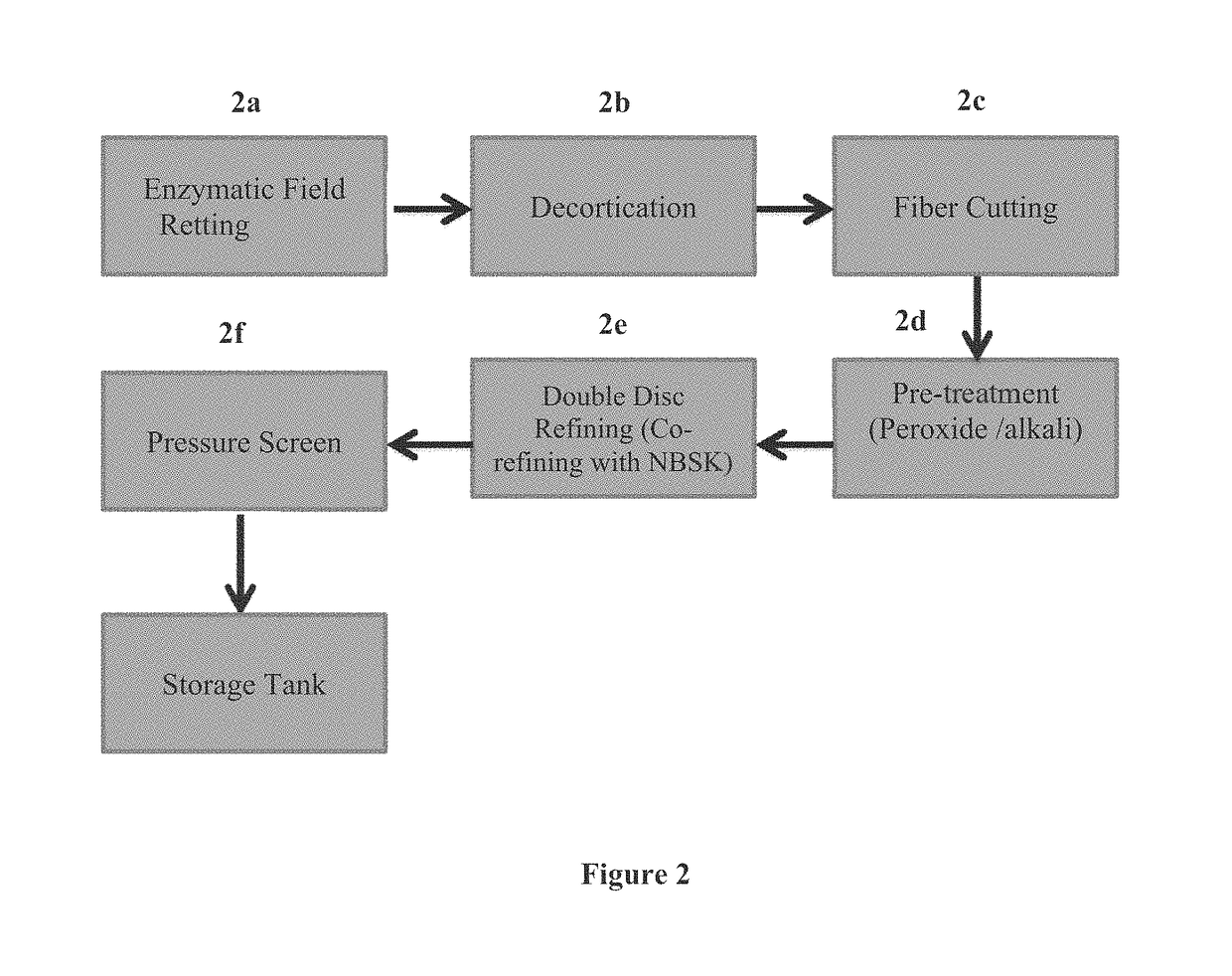Cannabis fiber, absorbent cellulosic structures containing cannabis fiber and methods of making the same
a technology cannabis fiber, which is applied in the field of absorbent cellulosic structure manufactured using cannabis fiber, can solve the problems of inability to economically viable hemp, inability to economically viable only grow hemp, and inability to grow hemp. and other problems, to achieve the effect of low base weight, low manufacturing cost and high pectin concentration
- Summary
- Abstract
- Description
- Claims
- Application Information
AI Technical Summary
Benefits of technology
Problems solved by technology
Method used
Image
Examples
Embodiment Construction
[0024]The headings used herein are for organizational purposes only and are not meant to be used to limit the scope of the description or the claims. As used throughout this application, the words “may” and “can” are used in a permissive sense (i.e., meaning having the potential to), rather than the mandatory sense (i.e., meaning must). Similarly, the words “include,”“including,” and “includes” mean including but not limited to. To facilitate understanding, like reference numerals have been used, where possible, to designate like elements common to the figures.
[0025]The present invention is directed to the use of cannabis fibers in the base sheet of absorbent products, such as tissue or towel products. Such tissue and towel products may be formed using the systems and methods described in U.S. application Ser. No. 13 / 837,685 (issued as U.S. Pat. No. 8,968,517); Ser. No. 14 / 534,631; and Ser. No. 14 / 561,802, the contents of which are incorporated herein by reference in their entirety....
PUM
| Property | Measurement | Unit |
|---|---|---|
| length | aaaaa | aaaaa |
| temperature set-point | aaaaa | aaaaa |
| pressure | aaaaa | aaaaa |
Abstract
Description
Claims
Application Information
 Login to View More
Login to View More - R&D
- Intellectual Property
- Life Sciences
- Materials
- Tech Scout
- Unparalleled Data Quality
- Higher Quality Content
- 60% Fewer Hallucinations
Browse by: Latest US Patents, China's latest patents, Technical Efficacy Thesaurus, Application Domain, Technology Topic, Popular Technical Reports.
© 2025 PatSnap. All rights reserved.Legal|Privacy policy|Modern Slavery Act Transparency Statement|Sitemap|About US| Contact US: help@patsnap.com



